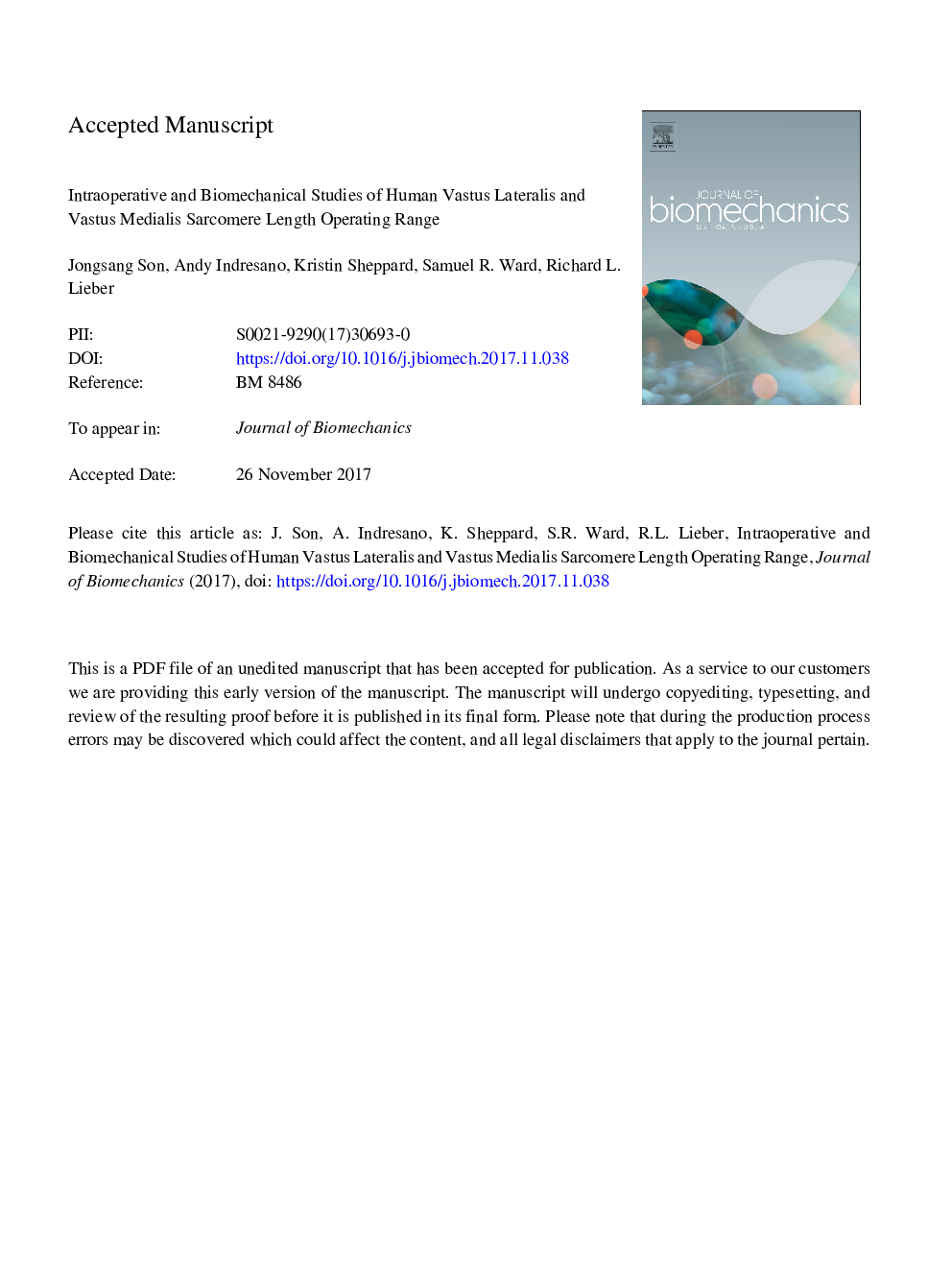| Article ID | Journal | Published Year | Pages | File Type |
|---|---|---|---|---|
| 7236747 | Journal of Biomechanics | 2018 | 31 Pages |
Abstract
The vast majority of musculoskeletal models are not validated against primary experimental data. Conversely, most human experimental measurements are not explained theoretically using models to provide a mechanistic understanding of experimental results. Here we present a study with both primary human data and primary modeling data. Intraoperative sarcomere length was measured on the human vastus lateralis (VL) and vastus medialis (VM) muscles (nâ¯=â¯8) by laser diffraction. These data were compared to a biomechanical model based on muscle architecture and moment arms obtained independently from cadaveric specimens (nâ¯=â¯9). Measured VL sarcomere length ranged from about 3.2â¯Âµm with the knee flexed to 45° to 3.8â¯Âµm with the knee flexed to 90°. These values were remarkably close to theoretical predictions. Measured VM sarcomere length ranged from 3.6â¯Âµm with the knee flexed to 45° to 4.1â¯Âµm with the knee flexed to 90°. These values were dramatically longer than theoretical predictions. Our measured sarcomere length values suggest that human vasti may have differing functions with regard to knee extension and patellar stabilization. This report underscores the importance of validating experimental data to theoretical models and vice versa.
Related Topics
Physical Sciences and Engineering
Engineering
Biomedical Engineering
Authors
Jongsang Son, Andy Indresano, Kristin Sheppard, Samuel R. Ward, Richard L. Lieber,
